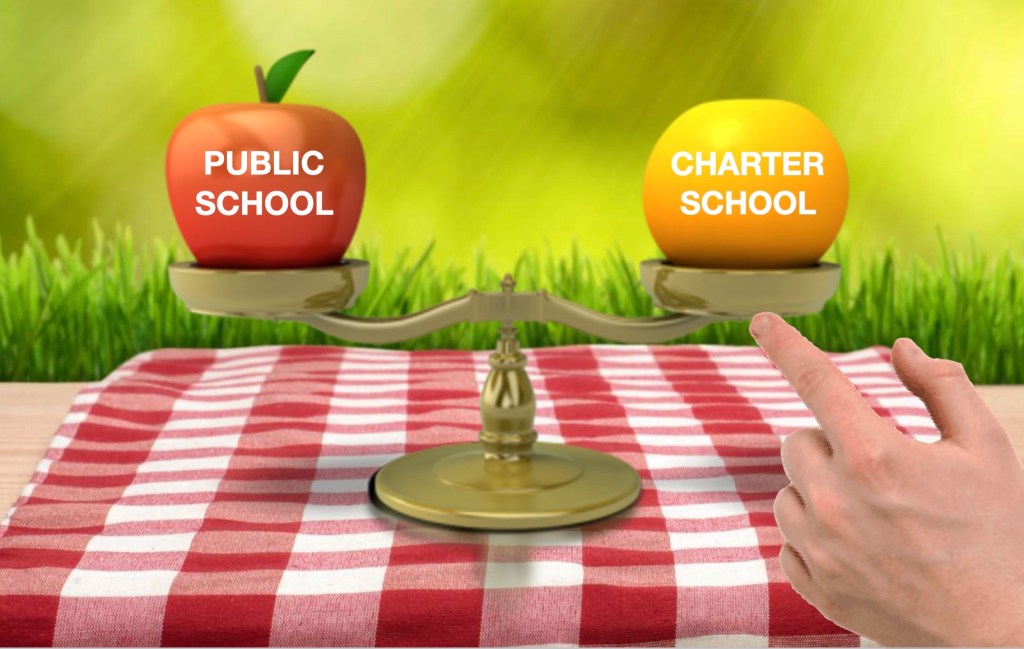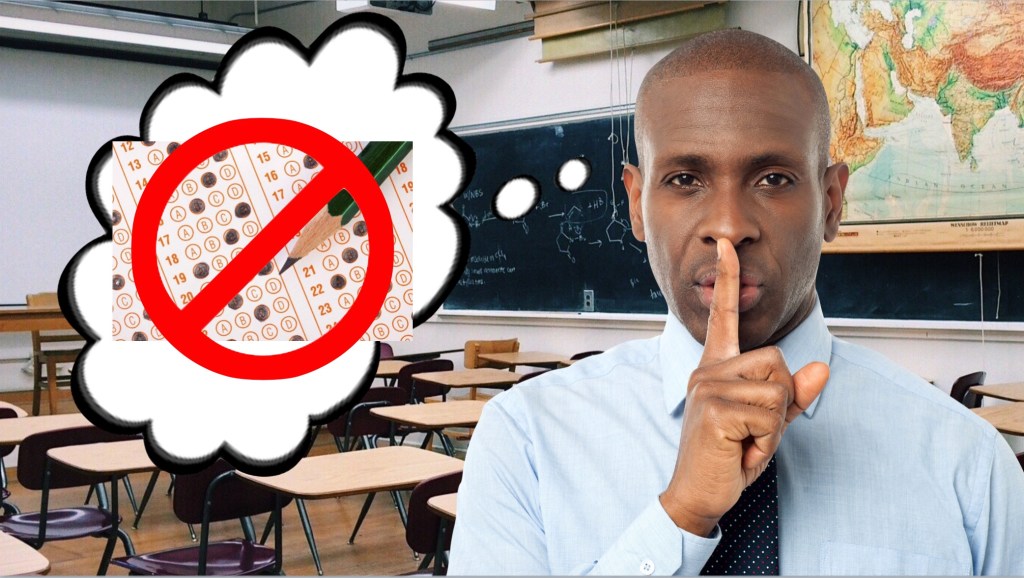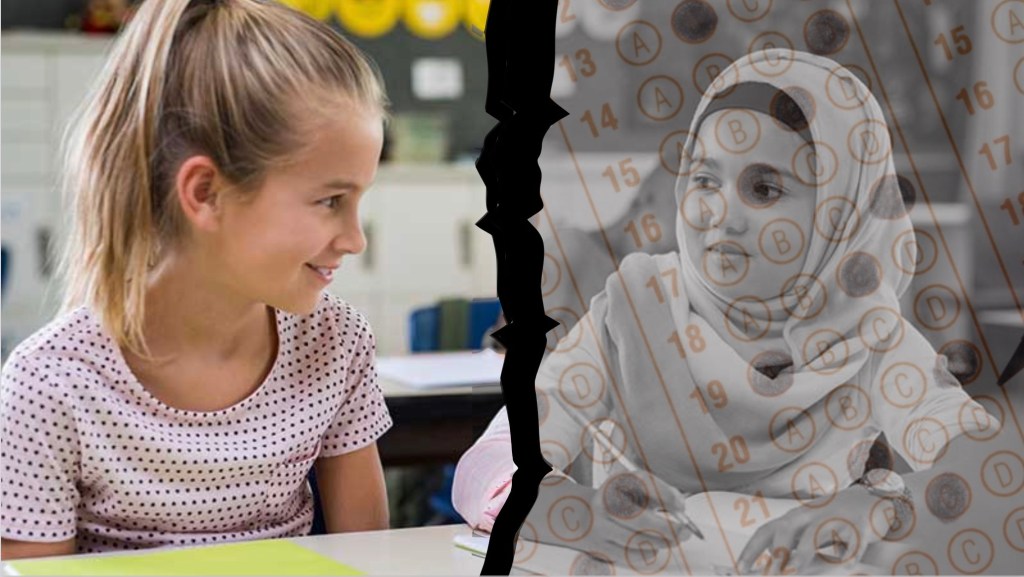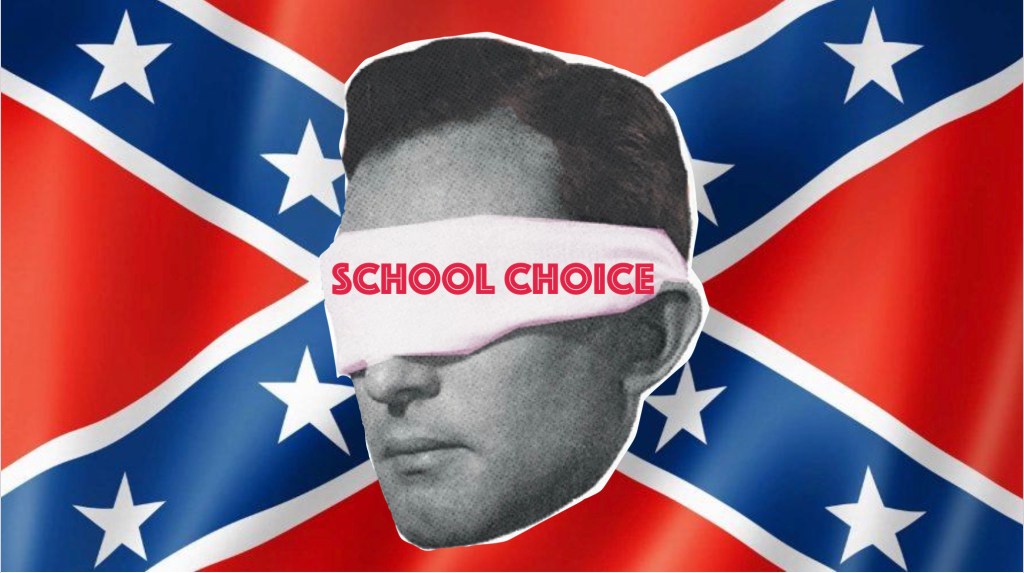
The Propel Charter School network has a history of making fabulous claims for its schools – claims not always backed up by reality.
The non-profit chain of 13 schools based in Pittsburgh, Pa, boasts high academics, safe campuses and certified teachers.
At least, that’s what its advertising blitz proclaims from every grocery store cart, newspaper page, radio announcement and billboard. Which just goes to show that anyone will tout your virtues if you pay them enough money – taxpayer money, that is.
Take Propel McKeesport – the franchise located in my own neighborhood.
The other day I saw a bus advertisement bragging:
“Catch Your Star!
#1 Elementary Charter School in the Nation – Just Blocks Away!
Propel McKeesport”

Unfortunately, I couldn’t find any support for this claim anywhere.
When I went to Propel’s own Website, in fact, there was nothing about it. Instead, it claimed Propel McKeesport was:
“…ranked as ONE OF THE BEST charter schools in the nation by U.S. News World Report” (Emphasis mine).
One of the best is not THE best. But it’s still good. Let’s call it embellishing the school’s resume.
According to Propel’s Website, in 2021, the McKeesport location was #11 in the state’s charter elementary schools and #7 in the state’s charter middle schools.
I suppose that is impressive, too, though being one of the best CHARTER SCHOOLS isn’t the same as being one of the best SCHOOLS.
In fact, when compared with all schools in the state, Propel McKeesport is in the bottom half for standardized test scores in both math and reading – one of the main metrics used to calculate its rank by US News and World Report.
The percentage of students achieving proficiency in math was 7% (which is lower than the Pennsylvania state average of 38%) for the 2020-21 school year. The percentage of students achieving proficiency in reading was 34% (which is lower than the Pennsylvania state average of 55%) for the 2020-21 school year.
Moreover, test scores in both subjects were higher at the McKeesport Area School District, the local authentic public school – 17% higher in math and 3.5% higher in reading at the elementary level and 6% higher in math and 2% higher in reading at the middle school level. Propel McKeesport does not teach beyond 8th grade.
So what exactly is Propel celebrating?
Maybe it’s the fact that its McKeesport location achieved these standardized test scores while teaching an intensely racially segregated student body – 86% minority (mostly Black). By comparison, the authentic public schools range from 52-71% minority students (mostly Black).
I’m not sure that’s much of a victory. Wasn’t one of the major tenants of the civil rights movement having racially integrated schools – that doing so would help students of color achieve academically because resources couldn’t be horded away from them?
That still sounds like a worthy goal – and one that is being actively worked against by Propel’s business model.
Moreover, Propel McKeesport is the only school in the charter chain where students of color outscore white students. Across the Propel system, white kids do anywhere from 17.6% better in math at Propel Pitcairn to 32.6% better in science at Propel Braddock Hills.
Not exactly a civil rights victory.
So what about the rest of Propel’s claims?
Since charter schools are paid for with tax dollars but can be privately operated (like Propel), they are free from many of the safety regulations that make authentic public schools great – like elected school boards, and transparent curriculum and finances.
The corporation runs the following schools in Allegheny County: Propel Andrew Street High School, Propel Hazelwood K-8, Propel Montour Middle School, Propel Braddock Hills Elementary School, Propel Homestead K-8, Propel Northside K-8, Propel McKeesport K-8, Propel Pitcairn K-8, Propel Braddock Hills High School, Propel Montour Elementary School, Propel Braddock Hills Middle School, Propel Montour High School, and Propel East K-8.
According to an advertisement in mass circulation, each of the schools in the charter chain provides:
“Safe Learning Environment
Individual Attention
Small Class Size100% Certified and Qualified Teachers
Award Winning Arts Programs
Leaders in Technology Integration
Uniforms
Tuition Free”
Let’s take a look at each claim in turn.
-Safe Learning Environment
What exactly does that mean?
Propel schools are no more safe than other schools in the area. There certainly isn’t any evidence they are somehow MORE safe.
There have been numerous incidents of arrest, criminality and danger in and around Propel Schools.
In 2021, a security guard at Turtle Creek, Pitcairn and McKeesport Propel Schools was fired after being charged with open lewdness and indecent exposure, according to court documents. North Versailles Police said the suspect was captured on video exposing and fondling himself inside a Walmart. When confronted by police, he allegedly showed officers his Propel School ID badge.
In 2015, two teenagers at Propel Braddock Hills High School were arrested after one allegedly tried to sell guns to another in a bathroom during the school day. Two guns were recovered by police and the students were taken into custody on campus. The rest of the students were placed on lockdown until police cleared the area.
In 2015, a visiting dance instructor at the Propel Middle School in Braddock was fired and arrested after allegedly sexting a 13-year-old female student. He allegedly told the girl not to tell anyone about it. In a statement from Propel, school officials say it happened “after school hours and off of Propel property.”
In 2019, Pitcairn Propel was evacuated when fumes made three teachers and four students nauseous. Roughly 280 teachers and students were evacuated from the school and the affected people were taken to nearby hospitals. Monroeville Borough was doing work on a sewer when fumes got into the school.
In 2019, police arrested four people in connection with a scheme to steal nearly $23,000 from Propel Schools by forging checks in the charter school operator’s name. The Propel Schools Foundation filed a report with police after discovering nearly two dozen fraudulent checks in Propel’s name had been cashed at various places, a Pittsburgh Public Safety spokeswoman said. At least 28 checks drawn against the school’s bank account were counterfeit, the complaint said. The fake checks were cashed using the forged signature of the school’s co-founder, Jeremy Resnick.
So does Propel provide a safe learning environment? Maybe. But not more so than any other district.
Individual Attention and Small Class Size
The problem here is verification.
Charter schools are not nearly as transparent as authentic public schools. They are not required by law to provide as much information about their operations as neighborhood public schools. For instance, nearly every authentic public school district is run by an elected school board which has open meetings and open records.
For Propel it is unclear exactly how members are chosen for its corporate board, but it is difficult for parents and community members to be appointed.
According to an article in Public Source, individuals can only become board members if they are already members of the “Friends of Propel,” but the charter chain did not provide information on this group or how its members are selected.
So for most details we’re really left with just taking Propel’s word without any method of verifying it.
When it comes to class size, most Propel schools report having student-to-teacher ratios slightly smaller or the same as at neighborhood authentic public schools. But who knows? There’s no way to tell whether classes may actually be larger.
However, individual attention is even harder to verify.
Most schools focus on more individual attention these days.
Unfortunately, the network provides very little detailed information about its curriculum.
Even in 2018 when Propel had submitted applications to the state to consolidate its network into a Multiple Charter School Organization, it did not submit its entire curriculum which had been requested to see if it was aligned to state academic standards. The state ultimately denied this request due to insufficient information.
So does Propel provide individual attention? Your guess is as good as mine.
-100% Certified and Qualified Teachers
Authentic public schools need to have certified and qualified teachers by law. To teach math, for example, you usually need someone with at least a 4-year teaching degree or more. Only in the case of shortages can positions by temporarily filled by individuals with emergency certifications. Not so with charter schools. They only have to have certified and qualified teachers in core content areas – English, Math, Science and Social Studies.
So this claim by Propel is a way of bragging that the network doesn’t have to have certified and qualified teachers, but it does so anyway.
Unfortunately, it is definitively false.
According to those US News and World Report spotlights that the charter school network likes to highlight, several Propel schools do not have all certified teachers. For instance, Propel McKeesport only has 92% full-time certified teachers, Propel Homestead only has 94%, Propel Pitcairn only has 96%, etc.
Moreover, a state audit of the Propel network conducted in 2016, found that even in core content areas, Propel charter schools did not have “highly qualified” teachers in accordance with state law.
So does Propel have 100% Certified and Qualified Teachers? Absolutely not.
Award Winning Arts Programs
Kudos to Propel for recognizing that arts are an important part of the curriculum. Or at least using it as a selling point on its advertisements. However, without details of its curriculum submitted to the state and verifiable by audit, there is nothing to back this claim up factually.
In fact, on Propel’s own Website, the only reference I see to awards for art is a brief mention in its after-school program which they label as “award-winning.”
What award did it win? The ‘Propel Presents Itself with an Award’ Award? Is there anything more substantial to this claim?
-Leaders in Technology Integration
Some Propel charter schools do claim to provide laptops to students. However, details are pretty sketchy beyond this point.
Moreover, technology in school is a terrible end in itself. It really matters how it’s being used. There are very few details on this that I can find.
-Uniforms
Yes! Propel does require students to wear blue, black or khaki clothing of a particular type. And you can even buy clothing on the network’s Website.
But is this really such a positive? Standardized testing is bad enough? Do we have to standardized dress, too?
Certainly every school should have a dress code, but can’t students express themselves freely anymore? I just don’t see why emulating the worst qualities of private schools is a great thing – especially when it adds an unnecessary cost for parents.
-Tuition Free
Charter schools are funded with public tax dollars. So, yes, you don’t have to pay a tuition to attend. However, you do have to pay for extras like school uniforms.
Also having multiple schools that provide duplicate services is instrumental in raising your local taxes.
Think about it. You already have an authentic public school you pay to operate. Now here comes Propel, a charter school network, demanding to open up shop. That means an additional tax burden on all residents and a reduction in resources for the neighborhood schools already in service.
In fact, overcoming the unpopularity of charter schools because of the increased expense for taxpayers is cited by Droz Marketing – the company that made all those glossy Propel advertisements – on its Website portfolio as an obstacle the company had to overcome to sell Propel to the masses.
Which brings us back to the beginning.
Does Propel go beyond the facts in its claims for itself?
Certainly.
Many businesses do that these days. And make no mistake – Propel IS a business. If it can cut a corner or find a loophole to put more money in operators’ pockets, it will.
Don’t let its non-profit status fool you.
For instance, in 2016 the state caught Propel stealing $376,922 of your tax dollars to pay for rental fees on properties it already owns. It was literally charging itself an unnecessary fee and paying itself with your money.
Technically, this is not illegal. But it certainly doesn’t help educate children. It just goes to enrich the charter school operators.
Non-profit? Yeah, in name only.
However, let me end with what may be the most telling indicator of what it is like at Propel’s charter schools.
indeed.com is a Website workers use to decide if they should apply at a given job site. Employees anonymously review their current place of employment to let prospective job applicants know what it is like there and if they should consider seeking a job there.
The site has many entries on schools in the Propel network. Some are positive. Some are glowing. But most are incredibly negative.
Here in their own words is what it’s like inside the Propel network from the people who work (or worked) there.
Propel Schools – Insiders’ Accounts:
Students rule.
Para Educator (Former Employee) – Propel East, Turtle Creek – July 19, 2020
Pandering to the cultural climate and using all the right talking points still doesn’t provide a quality education because of the many behavior problems.
Educator (Current Employee) – Pittsburgh, PA – August 4, 2022
Management verbalizes a desire, but does not actively seek to improve diversity within the ranks of educators. The lack of diversity directly impacts how the student body is educated.
Stressful, consuming place to work with little support from administration.
First Grade Teacher (Former Employee) – McKeesport, PA – April 15, 2022
I worked at Propel McKeesport for 9 days before I realized it would negatively affect my mental health greatly if I stayed. Everything about the school was chaotic and unorganized. There is so much asked of the teachers, and they are given little to no support in the process. The people that are put in place to act as supports are spread so thin, that you aren’t able to receive the support necessary. I would have to get to work early and stay late in order to get all of my tasks done. I had no time for my personal life, and I was constantly overwhelmed. Leaving was the best decision I could’ve made for myself and my well being.
Pros
Higher than average starting pay for new teachers, healthcare benefits
Cons
Unorganized, consuming, little support/structure
Hope you have a good therapist if you get hired at the Hazelwood location.
Elementary School Teacher (Former Employee) – Hazelwood, PA – February 3, 2022
My time at Propel Hazelwood was the worst experience I have ever had in a professional setting. The principal, at the time, had all sorts of big ideas, and no clue how to make them actionable. Behavior was managed through a failed token economy… so I’m sure you can imagine what behavior looked like. But good news, they’ll just fire you before you qualify for benefits, and trick the next poor sap. For reference, I was the 3rd of 5 teachers to go through that position in 2 years.
In summary, I hope you line up a therapist before you sign your soul away to Propel. I know I needed one.
Pros
There were no pros. I can’t even make one up.
Cons
Pitiful everything. People, leadership, attitudes, slogans, curriculum (or lack there of). Run away… fast.
Teacher (Former Employee) – McKeesport, PA – September 3, 2021
Propel McKeesport cannot keep their staff members. They have so many open positions because their lesson plan template is 6 pages long, and the work pile-up is more than loving your scholars. The wonderful scholars don’t get a chance to love who you are because you (if you are not a favorite) are swamped with work. The job is a nightmare.
Pros
There is not one pro I can think of.
Cons
Flooded with work. Lies and says it is “Propel-Wide”
Don’t work for them
Janitor (Current Employee) – Pittsburgh, PA – January 3, 2022
Hr treats you bad
Teachers treat you bad
You are less then nothing to everyone even your bosses
Never work for Braddock propel worst school I’ve seen
Pros
Nothing
Cons
You will be treated like you are worthless
Pure and total chaos
Teacher (Former Employee) – Braddock Hills, PA – September 27, 2021
Wow. It sounds good from the outside but is terrible in the inside. High school students were out of control. Administration offered little help. The parents were just as aggressive as their children. The teachers will throw anyone under the bus as soon as possible.
Pros
Great pay. Amazing benefits. Stellar retirement and health insurance.
Cons
Terribly behaved students, aggressive parents, woke and offended staff
Long school day, longer school year, longest time spent working outside of contractual hours
Educator (Current Employee) – Pittsburgh, PA – May 21, 2021
Even though I went in knowing the hours would be long and the school year would be longer, I was not prepared for the lack of work life balance. I have worked with Propel for 3 years and I will say that it is all consuming. I have been expected to not only do my job during building hours, but outside of work as well. This would be fine if it was occasional, but especially during COVID, it has become constant. Not only is the work never ending, but in my buildng we are not given adequate time to eat (25 minutes) or plan (50 minutes, but this time is often taken up by meetings almost daily). On top of limited planning time and expectations that never seem to stop coming, many of us have been forced into taking on additional, unpaid roles that we did not ask or agree to, and “no thank you” is not accepted as an answer. The district struggles to employee substitutes, so teachers are often expected to split classes when other grade level members are out. This has resulted in 30+ students in classrooms during non-COVID times, with one educator.
Pros
Good benefits, reasonable pay for the area, great curriculum
Cons
Short breaks, underqualified building administration, limited support
Schools care for kids but profit can get in the way
Teacher (Current Employee) – Pittsburgh, PA – January 13, 2021
Propel staff does care a lot about the students, but it doesn’t feel like those who are higher up care as much about them. Having a CEO/Superintendent may be the reason for this.
Pros
Dedicated cohorts
Cons
Work-life balance off
Administration had a lack of trust for teachers and lack of discipline for students.
teacher (Former Employee) – Montour, PA – July 24, 2020
There was always a feeling of being watched in a critical way throughout the day. Administration was constantly evaluating teacher performance in the classroom which created a negative work environment.
When a student became disruptive in the classroom administrators were difficult to locate. If an administrator did come to the classroom he/she would coddle the student with candy or a fun activity before returning him/her to the classroom. Needless to say the disruptive behavior would continue within an hour. Positive effective leadership was nonexistent.
Not very friendly
Accounting Manager (Former Employee) – Pittsburgh, PA – March 4, 2020
Did not get the job I was hired to do. Turnover was high. Cannot speak to majority of the the issues that I had due to a clause in my severance package.
Ehhh.
Educator (Former Employee) – Pitcairn, PA – February 3, 2020
Challenging work environment, burn out is high, little support from administration. Propel varies from building to building, but overall its sounds great in theory and in their “plans”, but they’re not able to carry out what they promise to students or staff.
This is a good ole boys system
Cons
Poor working place
Pros
Cons
Pros
Cons
Like this post? You might want to consider becoming a Patreon subscriber. This helps me continue to keep the blog going and get on with this difficult and challenging work.
Plus you get subscriber only extras!
Just CLICK HERE.

I’ve also written a book, “Gadfly on the Wall: A Public School Teacher Speaks Out on Racism and Reform,” now available from Garn Press. Ten percent of the proceeds go to the Badass Teachers Association. Check it out!







































